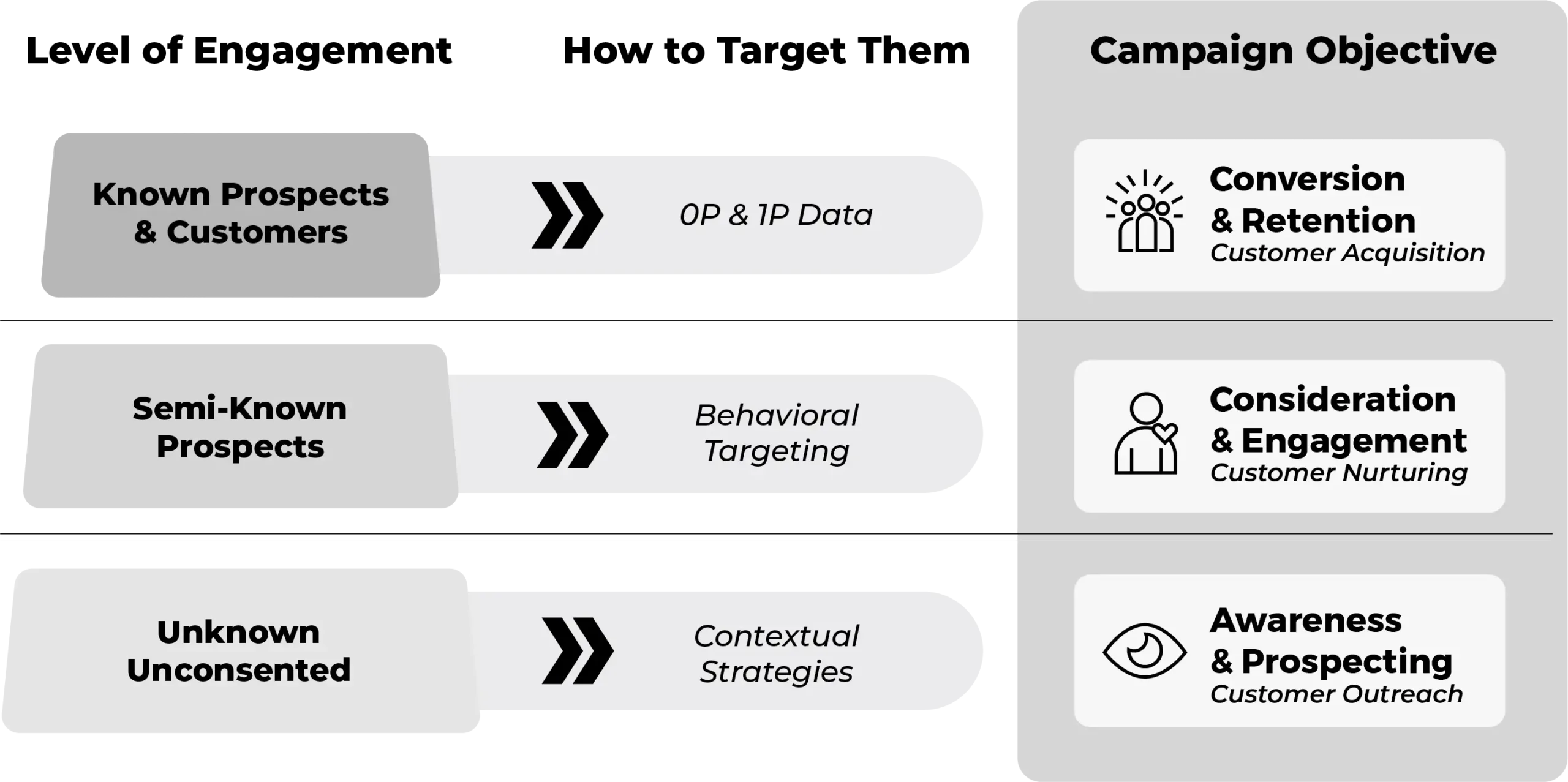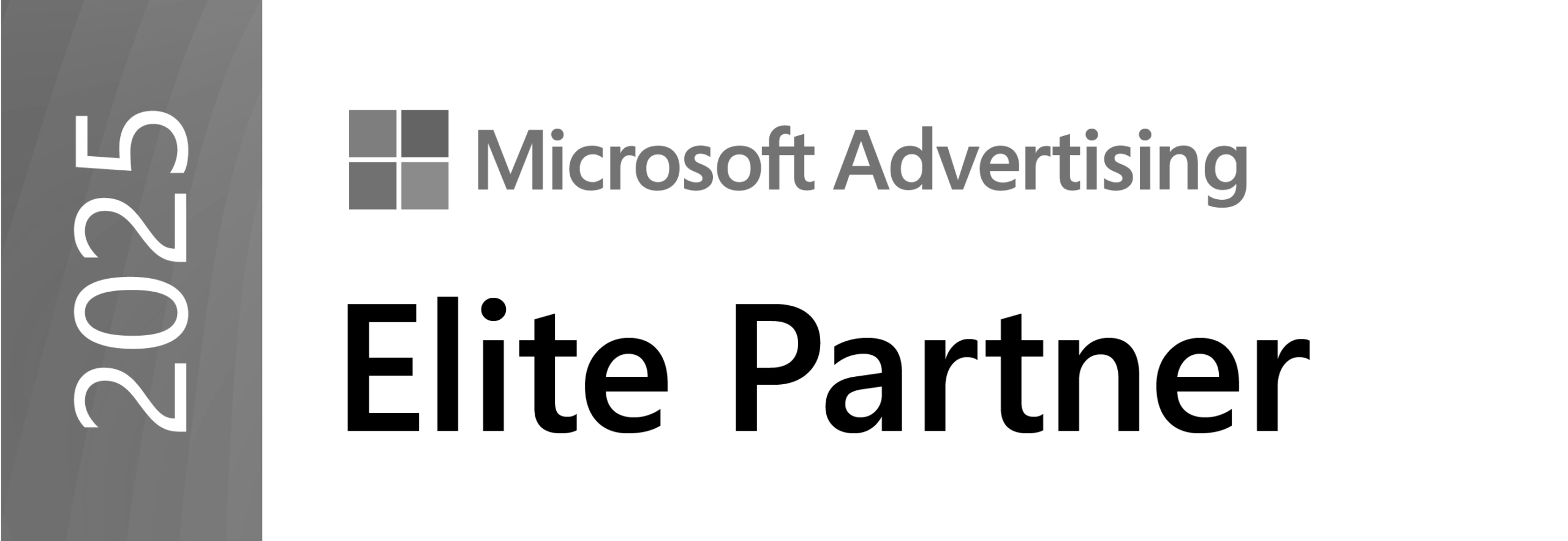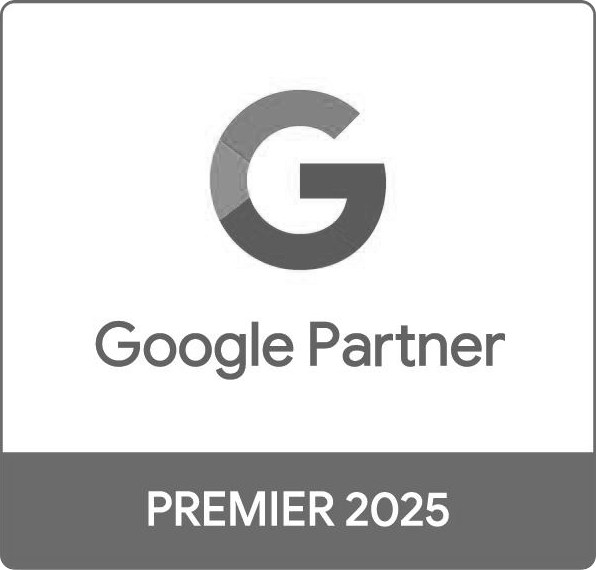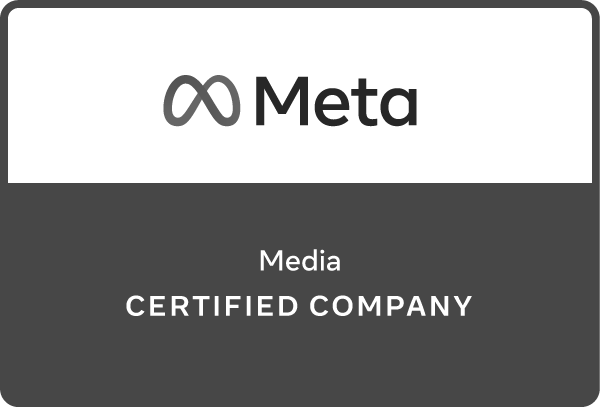
The best way for brands to connect with their target audiences has always been a puzzle. The old-school method of blasting generic messages has evolved into something more refined — a personalized strategy that puts audiences first. This shift recognizes that not all potential customers are alike, highlighting the importance of understanding the unique needs of different audience segments for crafting tailored and effective marketing campaigns that truly resonate and drive meaningful connections and conversions.
How can marketers and brands go about this? It all comes down to meeting your audiences where they are, and connecting with them in a way that matches their level of engagement.
3 steps for precise audience targeting
Rise adopts a sequential approach to determine how communications will drive better targeting tactics by aligning the right messaging with the moment when people are most receptive. Before and after executing your campaign, consider these three major steps:
Step 1: Identify audiences
Begin by defining your target audience. This includes identifying the cultural and media forces that influence them and understanding how they currently interact with your brand and/or category.
Step 2: Reach Them Where They Are
Outline the ways in which your brand can enhance people’s lives and provide seamless experiences by leveraging household data. This includes identifying key ideas, locations, spaces, and experiences where your brand can add value.
Once you have identified who your target audience is and where you can reach them, focus on curating ads with messaging that speaks to their current level of user intent. Understanding their intent level and aligning messaging and content with their receptivity creates more impactful experiences, shaping behavior.
Step 3: Measure Success
Tie it all up by understanding your results. Rise’s proprietary media optimization platform, Connex®, provides a unified view that brings all channels and technologies together and automates spend decisions at scale to drive the best performance possible.
Now that we have our steps laid out, let’s take a refined look at all of the audience segments and the many ways we can target across the full funnel to reach any group of audiences based on their intent.
Create sub-segments of audiences based on intent

Known prospects & active customers
Let’s start with our most engaged users, known prospects and active customers. When it comes to reaching this group, brands need to rely heavily on leveraging zero-party (0P) and first-party (1P) data. Our primary objective is to enhance conversion rates while prioritizing customer acquisition. But don’t worry, it’s not as complex as it sounds.
It all starts with crafting a data-driven strategy that directly engages individuals who have either made a purchase from our brand or have shown a strong inclination to do so. By doing this, we can tailor our marketing efforts, such as personalized emails and targeted advertisements, to suit their specific preferences and behaviors. For eCommerce brands, this targeting strategy extends beyond customer acquisition; it aims to foster repeat purchases and maximize the lifetime value of each customer.

Let’s say a luxury fashion retailer aims to elevate its customer engagement and retention strategies. By leveraging a sophisticated CRM system, they segment their audience meticulously, precisely customizing their outreach efforts across various channels. For instance, they might send personalized emails featuring exclusive collections or limited-time offers based on individual preferences gleaned from past purchases or survey responses. Additionally, they utilize targeted social media ads on TikTok to showcase relevant products to specific customer segments, maximizing conversion potential. This approach not only allows the retailer to reach each segment of their known prospects, but also allows them to build long-term relationships with customers, predicting what they might like next and suggesting it before they even think of it.
Semi-known prospects
When we target audiences who show partial familiarity and early signs of interest, it’s important to understand that they’re typically in the exploratory phase, weighing their options before committing to a purchase. To capture their attention effectively, our strategy must revolve around staying front and center in their minds. This involves not only delivering quality content and messages across both online and offline touchpoints but also leveraging behavioral targeting to personalize their experience.

Let’s take a consumer services brand specializing in cleaning services as an example. This brand initiates targeted advertising campaigns on platforms like Meta and Instagram, directing efforts towards individuals displaying interest in home cleaning solutions. Through compelling ad creatives, the brand highlights success stories of satisfied customers who have benefitted from their cleaning services. Each ad contains a persuasive call-to-action, urging viewers to schedule a cleaning service or request a free quote. These advertisements are meticulously tailored to resonate with each prospect’s unique needs, shaped by their previous engagements on the website. Furthermore, for prospects who have interacted with the brand but haven’t committed to booking a service, the brand presents targeted ads offering a tempting offer: a complimentary consultation with a cleaning expert to assess their specific cleaning needs. This enticing offer serves as a catalyst, encouraging prospects to take the leap and see if the cleaning service fits their lifestyle and budget.
Anonymous prospects
When trying to reach anonymous audiences, it’s crucial to maximize the available breadcrumbs of targeting at your disposal. Being smart about leveraging demographics such as physical location, professional attributes, and other relevant factors can significantly expand reach and enhance awareness and prospecting efforts.

For instance, suppose you’re a B2B brand seeking to enhance engagement with potential clients. Identifying key decision-makers within target companies through their job titles ensures reaching those most influential in the decision-making process. Simultaneously, demographic segmentation enables tailoring messaging to resonate with specific audience segments, while geographic targeting enhances campaign impact by concentrating efforts where they’re most likely to succeed. This personalized approach not only boosts relevance but also drives higher engagement and conversions. In addition to these strategies, keyword targeting in search engine marketing (SEM) campaigns offers a valuable opportunity to connect with potential customers based on their search queries. By crafting keyword-targeted ad campaigns on platforms like Google Ads, businesses can reach anonymous audiences actively seeking relevant products or services. Furthermore, utilizing ad extensions and negative keywords refines targeting and enhances overall ad performance.
Driving long-term brand success
Expanding reach means more than using existing data; it involves tapping into lookalike audiences by analyzing current customer traits. This enables reaching new prospects likely to purchase, enhancing outreach efforts. Rigorous testing of these audiences is equally crucial for effectiveness. Connex®, part of Rise’s capabilities, compares lookalike audience performance across platforms in real time, facilitating agile decision-making for long-term growth.
By targeting audience segments based on intent, businesses can guide customers from awareness to loyalty, maximizing conversions and fostering lasting relationships. Contact us today and let Rise help you build out your robust targeting strategy!








